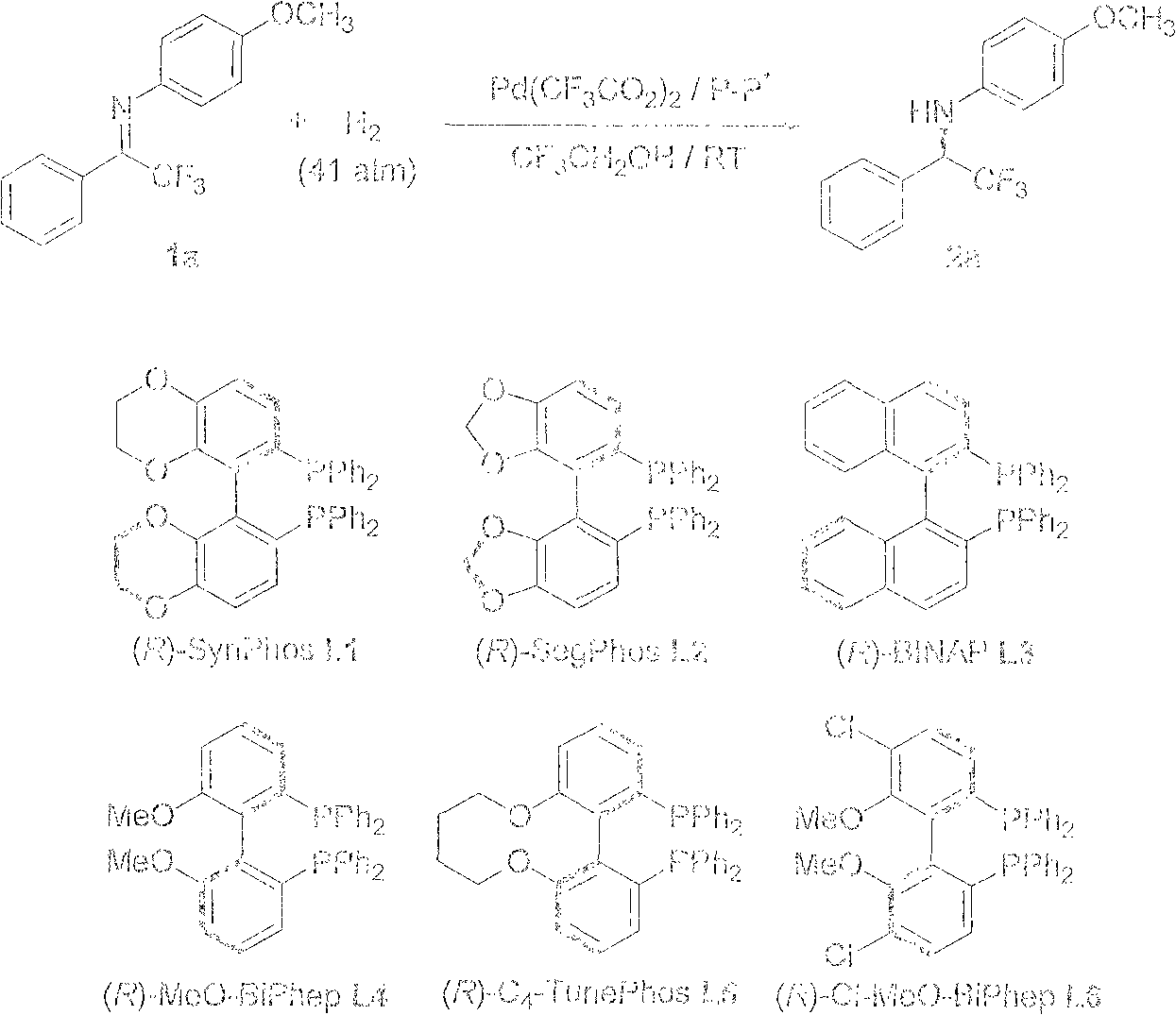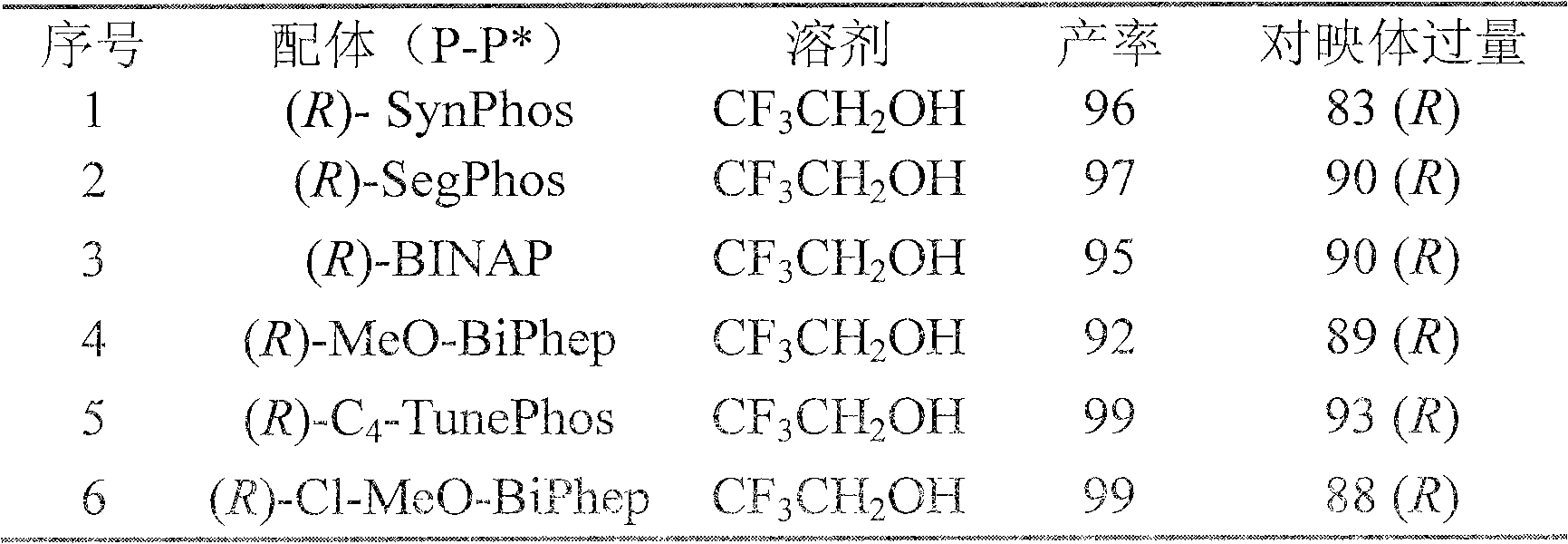Method for synthesizing chiral fluoroamine by palladium catalytic asymmetric hydrogenation
An asymmetric, chemical synthesis technology, applied in chemical instruments and methods, preparation of organic compounds, preparation of amino compounds, etc., to achieve mild conditions, high reactivity and enantioselectivity, and simple and practical reaction operations.
- Summary
- Abstract
- Description
- Claims
- Application Information
AI Technical Summary
Problems solved by technology
Method used
Image
Examples
Embodiment 1
[0030] Embodiment 1: optimization of conditions
[0031] Put palladium trifluoroacetate (0.0025 mmol, 0.85 mg) and the chiral ligand L in the diagram below into the reaction flask 1 -L 6 One of them (0.003 mmol), after nitrogen replacement, 1 ml of acetone was added, and stirred at room temperature for 1 hour. It was then concentrated in vacuo, and 3 ml of 2,2,2-trifluoroethanol was added under nitrogen, and the solution was transferred to pre-placed substrate 1a (35 mg, 0.125 mmol) and In the reaction kettle of MS molecular sieves (40 mg), 41 atmospheres of hydrogen gas was introduced, and the reaction was carried out at 25° C. for 16 hours. Slowly release hydrogen, remove the solvent, and directly separate the pure product by column chromatography. The reaction formula and ligand structure are as follows:
[0032]
[0033] 2a: (R)-4-Methoxy-N(2,2,2-trifluoro-1-phenylethyl)aniliee. 99% yield, 93% ee, [α] RT D =-53.6 (c0.60, CHCl 3 ); 1 H NMR (400MHz, CDCl 3 )δ7.4...
Embodiment 2
[0037]Example 2: Synthesis of various chiral fluoroamines by palladium-catalyzed asymmetric hydrogenation 2
[0038] Palladium trifluoroacetate (0.85 mg, 0.0025 mmol) and (R)-Cl-MeO-BiPhep (2.0 mg, 0.003 mmol) were put into the reaction flask, 1 ml of acetone was added after nitrogen replacement, and stirred at room temperature for 1 hour. It was then concentrated in vacuo, 3 ml of 2,2,2-trifluoroethanol was added under nitrogen, and the solution was transferred to a pre-placed substrate 1 (0.125 mmol) and In the reactor of MS (40 mg), feed hydrogen to 41 atmospheres, react at room temperature for 15-24 hours, and release hydrogen slowly. After removing solvent, direct column chromatography separates and obtains pure product, and reaction formula is as follows:
[0039]
[0040] The enantiomeric excess of the product was determined by chiral liquid chromatography, see Table 2.
[0041] Table 2. Synthesis of various chiral fluoroamines by palladium-catalyzed asymmetric hy...
PUM
 Login to View More
Login to View More Abstract
Description
Claims
Application Information
 Login to View More
Login to View More - R&D
- Intellectual Property
- Life Sciences
- Materials
- Tech Scout
- Unparalleled Data Quality
- Higher Quality Content
- 60% Fewer Hallucinations
Browse by: Latest US Patents, China's latest patents, Technical Efficacy Thesaurus, Application Domain, Technology Topic, Popular Technical Reports.
© 2025 PatSnap. All rights reserved.Legal|Privacy policy|Modern Slavery Act Transparency Statement|Sitemap|About US| Contact US: help@patsnap.com



